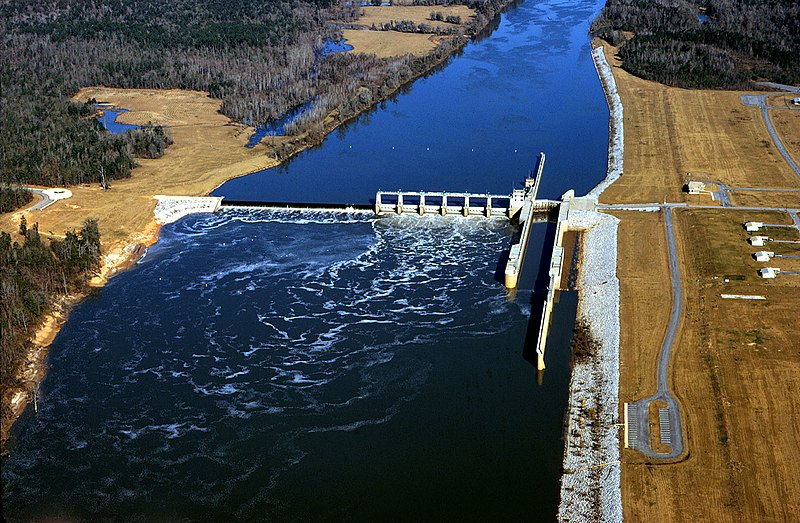THE MONTGOMERY READER:

Welcome Montgomery readers!
We know you're not a city full of maritime professionals yet, but as you awaken to the possibilities of a renewal of your vibrant navigational past, we're glad that you're checking in here to start reading up on the subject. We've seen your beautiful town and felt its dynamism. If any town in America can take "latent navigability" and turn it into an active "marine economic engine" we'd bet on Montgomery. Look at the illustration above, you've actually been off and running for some time now.
You need some shakers and movers to begin the process of educating themselves to the possibilities of inland navigation and inland navigation supported industries. Our mission has always been to provide a place to jump start research into any maritime subject. We are going to focus on your needs as new readers for a few days to make the task of the movers and shakers easier.
We also are going to focus on Montgomery and water sports. Montgomery is a short drive from both Lake Martin and the Gulf Beaches. Every fisherman and boater in Montgomery with just a little focus on how to get more of their sport on the Alabama River can help channel demand for the continuance of navigability. So in this posting we hope to help you find our previous postings that specifically dealt with Montgomery and inland navigation.
Below is a picture of one of the locks and dams below the city that keep the Alabama River Navigable. In case you are not familiar with the concept of a lock and dam, the dam part is obviously the part that runs across the river. The lock is the box like structure on right side of the picture as you face it.

The lock chamber comes with gates that allow a vessel to pass through the dam despite differing water levels on either side. One gate is opened and the chamber empties or fills to the same level as the water on the side of the dam where the chamber gate opened. After the vessel enters the lock chamber and is secured the gate closes behind the vessel. Now both gates are closed and the vessel sits in the calm, pooled waters of the lock chamber. The level in the chamber is then gently increased or decreased by sluicing or pumping until the water level in the chamber is equal to the level on the river on the side of the dam opposite where the vessel entered. The gates are then opened and the vessel can freely navigate the next leg of her river voyage. Your existing locks can accommodate commercial towboats and barges, small to medium inland designed over night and day excursion or "cruise" vessels and most any size yacht or large flotillas of recreational boats.
Notice now that at the lock pictured, no vessel traffic is waiting to use the lock chamber. Locks are usually built and maintained by the U.S. Army Corps of Engineers. In tight budget times which we are already in, locks with out traffic often find themselves without funding. The Navigability of Montgomery which has such an illustrious past and the possibility of a grand future is absolutely dependent on keeping these locks open. In terms of maintaining Montgomery's potential as an inland port the immediate task of the city fathers with the help of healthy citizen participation is the preservation of those locks. Real marine economic development can follow, but if the locks are abandoned, commercial navigability is history. So today we are going to suggest a reading list to help everyone prepare for the campaign.
First Lets look at whats right here in the blog, what have we written that deals with the subject at hand:
1. "AN OPEN LETTER TO MONTGOMERY "was published twice, most recently Thursday September 6, 2012
2. Our Book Review of American Admiralty's COMMON HIGHWAY a book about navigation rights, very information dense but just 40 pages. A must read for local officials who may have to brief Congress and recreational fishermen who would like to avoid some of the problems Louisiana has experienced with "commons rustling"by those who would privatise America's navigable waters. Posted as a blog on September 6th.
3. Today's post (You're reading it now)
4. And we recommend to anyone who may take on a serious role as an advocate for navigability
the Book "THE WAY OF THE SHIP", the best primer on the history of domestic American waterborne transportation ever written.
Don't forget our first suggestion, THE WATERWAYS JOURNAL using our link anyone may read the daily on line version but we suggest that the members of the vanguard of the movement get a weekly subscription of the paper version.
We'll have more for you Montgomery over the next week. We'll try to point you in the right direction as some of you emerge as advocates for continued and expanded navigability. Good luck if you have questions send us a comment. There is space for that right at the end of this post.

Shop Amazon Warehouse Deals - Deep Discounts on Open-box and Used PCs
No comments:
Post a Comment